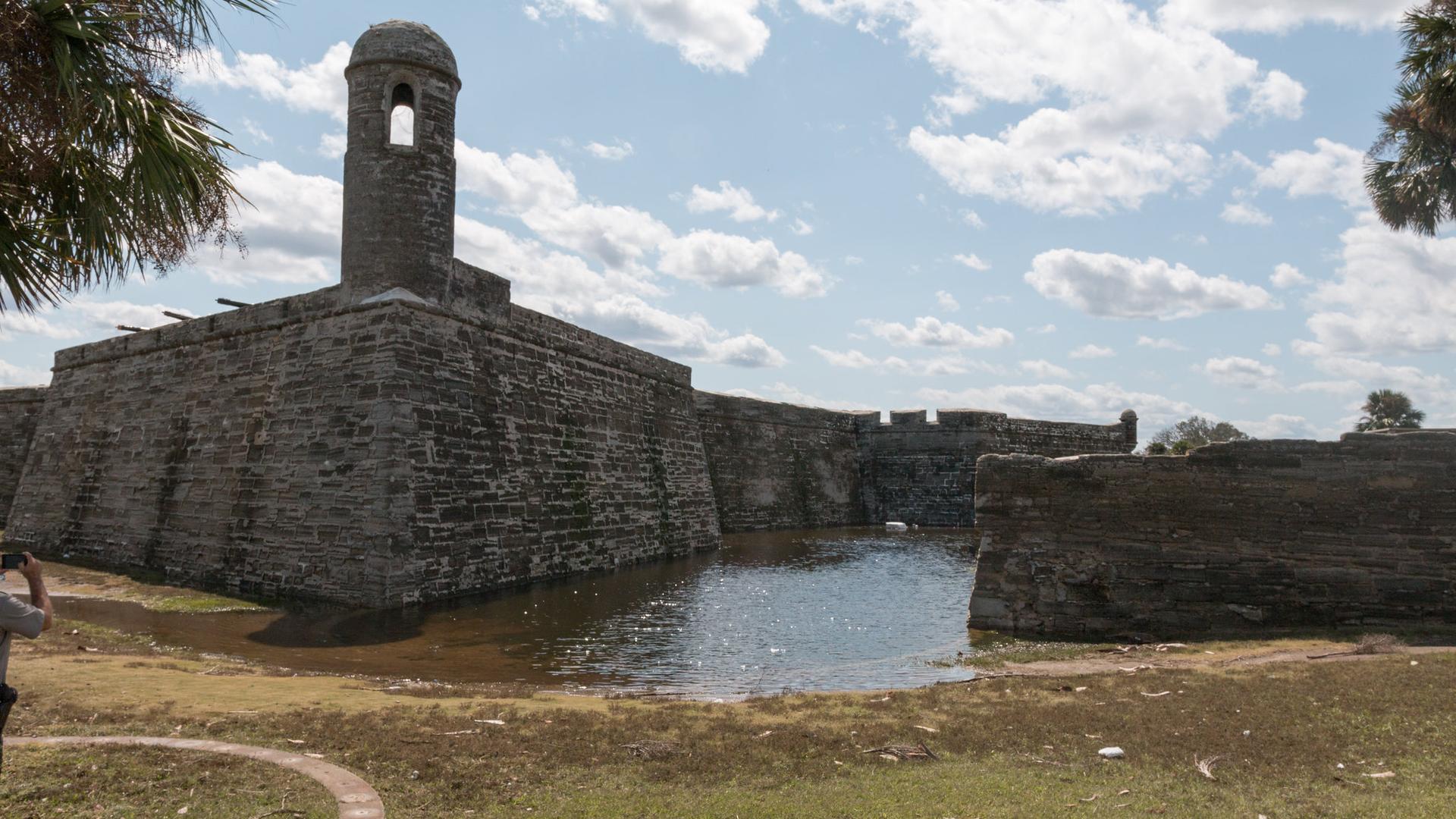Rising sea levels along Florida’s coast threaten to damage valuable archeological sites
Even when sea level rises just inches, the effect on low-lying shorelines can be felt hundreds of feet away from the water’s edge. And perhaps no place is more vulnerable than the Florida peninsula, where much of the land along its coastline is mere feet above the seas.
So some archaeologists are racing against time and the rising ocean to document and protect important historic sites.
Archeologist Emily Jane Murray is one of the them. She works at a site called Shell Bluff Landing in St. Johns County. You’d never guess by looking at it, but Murray says this wooded area on the Tolomato River has seen thousands of years of human history.
“I’m always amazed, every time I come, just how much higher the tide seems at this site.”
“I’m always amazed, every time I come, just how much higher the tide seems at this site,” Murray says.
Related: New report forecasts a troubling picture of rising tides, frequent flooding on coasts
Murray is mapping the shoreline to track how water levels have changed, part of a project that examines how climate change is threatening and in many cases already harming archaeological sites.
There’s a wall at Shell Bluff that was built in the 1800s. Today the river is lapping at its base. But aerial pictures from the 1940s show 100 feet of shoreline separating it from the water.
“It’s the Intracoastal Waterway, so a lot of this has been heavily modified and dredged and maintained for navigability,” Murray says. “So that’s definitely affected the shoreline. And it could have been even further out back in the 1800s, when the wall was put in.”
A similar story is playing out 10 miles south at the iconic Castillo de San Marcos in historic downtown St. Augustine.
The Spanish built the fort in 1672, making it the city’s oldest building. Steven Roberts, with the National Park Service, says downtown floods on a nearly monthly basis during high tides, and that’s only going to happen more often as seas rise due to climate change.
Related: One small Florida city tries to adapt to climate change, mostly alone
“As the parking lot floods, it becomes harder and harder for visitors to get to the fort and, obviously, we see less visitation on those days,” Roberts points out.
That’s a big deal because the main economic driver here is heritage tourism — people visiting historic places — and the Castillo is the main attraction, bringing in about 800,000 visitors, who spend an estimated $40 million a year.
The Castillo’s walls are coquina, a soft and porous stone made of compressed shells. Those are good qualities when facing cannon fire, but not so much when it comes to water. Roberts says the absorbent coquina could compromise the fort’s integrity, as climate scientists predict seas could rise about 3 feet in the next 50 years.
“Now, that might not seem like a lot,” Roberts notes, “but what it would do is it would overtop some of our sea walls, it would add water to our dry moat, and that water over time, continuing to press against the soft coquina stone, could definitely weaken the foundation and over time erode the foundation, as well as the walls of the Castillo.”
Floodwaters could reach the structure multiple times per year by mid-century, up from today’s average of less than once a year, Climate Central data show. Recognizing the risk, the city of St. Augustine is taking steps to fight back the rising tides.
The Old City has just 15,000 or so residents and an annual budget of just $60 million, but since 2016, they’ve spent tens of millions of dollars on preventing floods. They’ve raised sea walls, retrofitted drainage systems and raised structures, with other projects in the works. And earlier this year, the city named engineer Jessica Beach as chief resilience officer.
“I think, having the historical resources within our city, that’s all the more reason for us to be aggressive with this and do what we can,” Beach says.
Related: A new book tells the stories of people coping with a changing American shoreline
But all of these projects probably won’t be enough if climate change continues unabated. With that possible outcome in mind, the National Park Service is turning to the Center for Digital Heritage at the University of South Florida.
“We use a series of different types of digital strategies to document and record cultural heritage locations,” says Lori Collins, the center’s director.
“We can do things like replicate, fabricate and present things in virtual reality that are very realistic, present things in augmented reality for the classroom to let people kind of explore and engage right in their own classroom,” Collins explains. “And then we’re doing things with imaging, where we’re creating virtual tours for the parks.”
For archeologist Emily Jane Murray, artifacts are tied to their original locations, so losing a site means losing a big chunk of history. Murray compares it to the famous fire at the Library of Alexandria.
“If this is what’s happening to the places where people used to live now, what’s coming for the places where we live?”
“I think about climate change impacts, too,” Murray says. “If this is what’s happening to the places where people used to live now, what’s coming for the places where we live? Because it’s not slowing down. These impacts are just kind of going to snowball.”
This story by Brendan Rivers of WJCT News 89.9, in Jacksonville, Florida, originally aired on Living on Earth from PRX.
